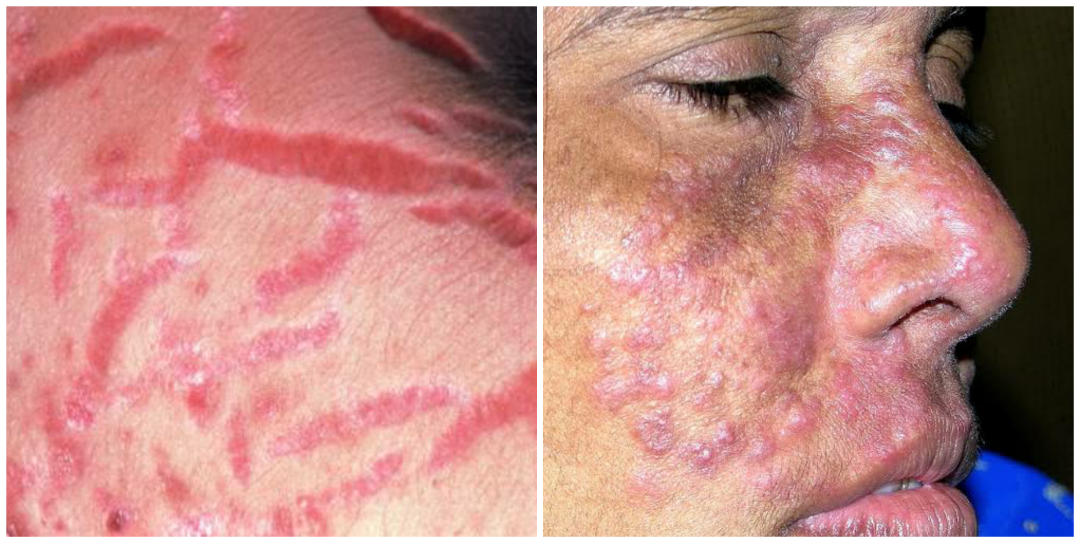Side effects of topical steroids on the skin.
Can you all Stop misusing Steroids for once?
Small skin rash, you will run and buy FunactA and other steroid containing cream? Stop it!
See a dermatologist for that skin rash because the wrong medication can cause a flare or worsen the situation. You may not know, you are bleaching on a low budget.
Do you like the coat of many colour appearance?
Allow your dermatologist to make their diagnosis and decide when a corticosteroid is needed in cases like melasma. Stop self medicating and experimenting with topical steroids. It will damage your skin.
It’s important to remember that steroids have side effects and great effects too and should be taken with a doctor’s prescriptions.
Don’t stop it abruptly. Yes, you heard me
Don’t go to the nearest pharmacy for a refill, unless your doctor asked you to. If not, don’t try it.
Topical corticosteroids are also considered as skin lightening agent. Melanin gives the human skin it’s colour. The more melanin you produce the more darkness. Melanin is synthesized by cells in the skin and hair follicles called melanocytes.
It’s speculated that Topical corticosteroids lighten the skin by;
-Slowing down skin cell turnover so reducing the number and activity of melanocytes.
-Reducing production of precursor steroid hormones thus reducing production of melanocyte stimulating hormone.
The side effects of topical steroids on the skin include;
– skin thinning and next! Stretch marks will appear.
– Skin atrophy
– Acneiform eruptions
– Steroid-induced rosacea
– perioral dermatitis
– pigment alteration ( coat of many colors)
– delayed wound healing
– acne
– increased growth of body hair
– skin ulcers
_thinning of the skin
_stretch marks (striae)

For those who use steriod on their kids, what do you hope to achieve? It can cause growth retardation. You need to stop.
Your friend visited a dermatologist who prescribed a cream for her baby’s rash doesn’t mean you should use it, your baby’s diagnosis may differ.
Let me end with the love of history.
Historically, skin bleaching actually started in the Victorian era. European women were literally painting their faces with lead paint. Queen Elizabeth 1 was known to take arsenic complexion wafers, to give her that ghostly look.
Pale skin became desirable because for hundreds of years it was associated with wealth and status. After all, only rich women could afford not to work outside, thereby avoiding the skin-darkening effects of the sun.
The Americans followed suit.
A study showed this practice can be traced as far back as the Ancient Egyptians, Romans and Greeks, who discovered that honey mixed with olive oil was a skin-lightening agent, and applied this mixture to their body and face.
Be comfortable in your skin. Love your skin and it will thank you at old age.
Don’t trade your blackness for anything.
Always, remember that when the sun hits your dark skin, issa instant glow something.
Nma Halliday MD





















